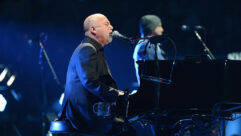Last week, I came across two stories. In one story a group of gamers who are quadriplegic are training to compete internationally. In the other story, people are trying to simulate tripping states that are initiated by chemicals—think mushrooms, LSD, ayahuasca—with AV.
The point of both stories was that neurological experiences become integrated and in turn change the brain. The gamers were healing and not just because they had something to do and care about. Their plastic brains were remapping competence—making new tracks not recreating old ones. Kind of like those people who use implants to “hear” color and otherwise redeploy senses to gather information in different ways. Likewise, the mixed results of AV tripping came out of an attempt to present the brain with new stimuli, to trick it out of the well-worn grooves
I’m going to argue that AV for worship on some level plays a similar role in that it facilitates an altered state—of peace, contemplation, inspiration, openness, community, what have you. Many people believe—and I agree—that this state is not merely temporary and not just because our spiritual practices help us be better people. Whatever we may participate in spiritually, we are changing ourselves neurologically as well.
I spent a big piece of the summer in Italy visiting churches of a Catholic faith I grew up in but no longer participate in. I expected nothing, and definitely did not expect the overwhelming experience of those spaces. The light, the art, architecture, and acoustics, the weird and brilliant details, the investment of artisans, their imagination, labor, rebellion—even the oppression, and injustice that was captured there—filled my senses and completely drew me in. I thought about how if your life was cold and grubby you could still enter into a kind of aesthetic, sensory beauty there that people have always craved (and you’d be warm). I was enveloped in the imaginations and product of the people who crafted those spaces.
Like nature, it’s an antidote to the internet which for all it’s vastness, does things mostly one way; it’s a singular kind of experience and it has a narrow, repetitive neurological impact— it’s squinting into a square, metaphorically as well as literally. It may expand your information but it doesn’t expand your neurons.
On the other hand, entering architecture (real or virtual) playing an instrument, listening through awesome speakers, seeing and interacting with imagery that fills your eyes and head, even inhabiting the unique acoustics or the particular light of a space— these are all experiences that hit our neurons in different ways and free things up to surprise and expand us.










